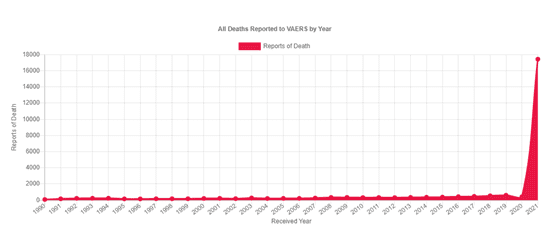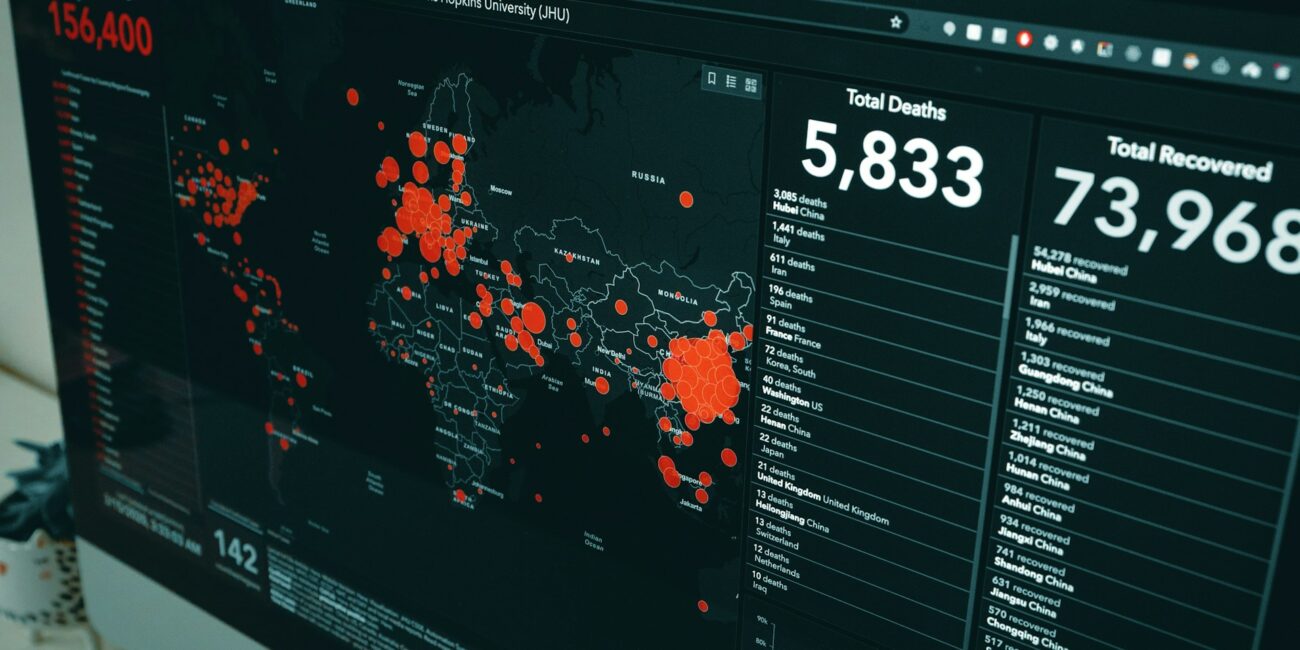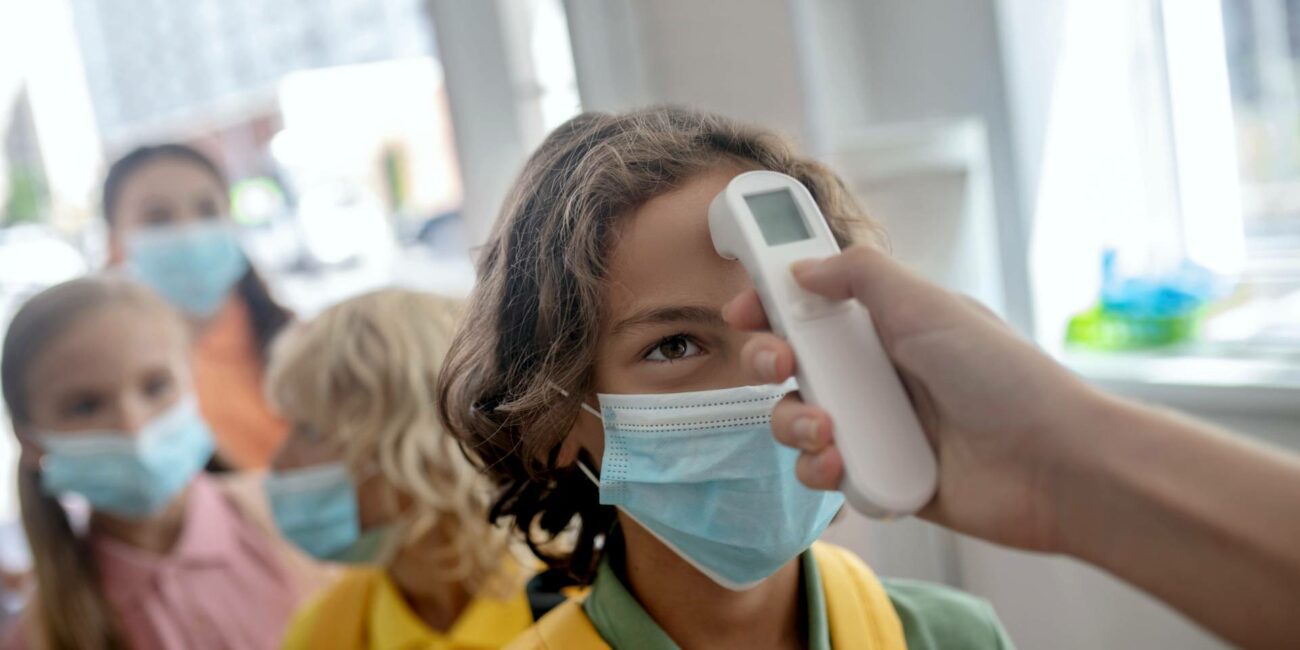Many companies have already implemented mandatory vaccination schemes for their employees and now seek to extend the policies to anyone entering their premises, including suppliers, tenants and consultants. What are your rights if you are on the receiving end of one of these policies?
In essence, mandatory vaccination policies cannot be enforced against suppliers, independent contractors or tenants. A company cannot therefore justify any action against such parties by reference to their mandatory vaccination policy. Your contract with a company that seeks to impose a mandate could, however, be cancelled on other grounds (such as other breaches) or simply not be renewed, and it may be difficult to prove that cancellation is a result of your response to their attempts to impose a mandate.
1. Privacy
At the outset, it is important to note that every individual has a right to privacy in terms of Section 9 and 12 of the Constitution, in terms of the Promotion of Equality and Prevention from Unfair Discrimination Act 4 of 2000 and in terms of the Protection of Private Information Act 4 of 2013. In principle therefore, you are under no obligation to disclose your vaccination status and there is established law, including in relation to HIV/AIDS that protects your rights in this regard.
2. The Minister of Labour’s Direction
The Minister of Employment and Labour has issued a direction in terms of regulations (the “Regulations”) made under the Disaster Management Act (the “Direction”) which deals with measures designed to address, prevent and combat the spread of COVID-19 in certain workplaces. Amongst other things, the Direction requires that Employers develop a plan (the “Plan”) outlining the measures that they intend to implement in respect of the vaccination of employees against COVID-19. The Direction requires Employers to consult in relation to the Plan.
The Direction does not require Employers to adopt a Plan and the Employer is entitled to conclude that it will not adopt any mandatory vaccination policy.
3. What is an “Employee”
The Direction makes a distinction between the term “employee” and “worker”. “Worker” is defined as any person who works in a workplace and includes an “employee of the employer” as well as other persons. The definition of an “employee” in the Basic Conditions of Employment Act (“BCEA”) applies to the Direction. The Direction does not refer to “workers” in the context of vaccination Plans.
Independent contractors are specifically excluded from the definition of “employee” under the BCEA. Only those who have an employment relationship with the company seeking to implement the Plan are covered by the Direction. Tenants would also clearly not qualify as “employees”.
Consequently, a company has no power under the Direction to apply a mandatory vaccination scheme to “workers”.[1] There may be some other contract in place with the company that permits the company to restrict access to the premises, however, as a general point of law, the Direction can only be applied to employees.
4. Non-compliance with the Direction
Frequently companies seeking to impose mandatory vaccination schemes have not complied with the Direction. This invalidates the Plans. In particular, we often notice the following:
4.1 The Company fails to conduct a risk assessment in accordance with Section 1(a)(i) of the Direction.
4.2 If the company did do a risk assessment prior to implementation of the Plan, it is often based on outdated science or no science at all. Notably, there is now ample evidence that COVID-19 injections (the “Vaccines”) do not prevent or materially reduce transmission of the SARS-COV-2 virus (the “Virus”). Consequently, the implementation of a mandatory scheme does not make the workplace safer.
4.3 Recognising that the Vaccines do not prevent or reduce transmission, many companies have shifted to justifying vaccination on the basis that it is “the best hope we have”. The Direction does not permit a company to implement a mandatory vaccination scheme to protect the employees themselves, nor does it enable them to implement a Plan because it is the only thing the company can do. The Direction only allows for Plans that render the workplace safer. This must be demonstrated by the company.
4.4 Companies frequently fail to identify employees who need to be vaccinated in accordance with Section 1(a)(ii) or to communicate the categories of employees who must be vaccinated or the criteria by which the company has determined who must be vaccinated. Many companies simply mandate the Vaccines for all employees.
4.5 Companies have often failed to consult in accordance with Section 1(c) or to make the Plan available for inspection in terms of Section 1(d), including by failing to supply employees with references to the science that the Company relied upon. Many companies have only sent the Plan to employees after it has already been approved.
4.6 Many companies fail to properly take into account the rights of employees to bodily integrity and the right to freedom of religion, belief and opinion or any of the other rights set out in the Constitution.
4.7 Most companies do not have copies of the scientific papers and other evidence that the company relied upon in formulating their Plan and without these, the company cannot have conducted a proper risk assessment.
5. Limitation of Rights
It is true that Constitutional rights can be limited. However, it is trite that the emphasis in our Constitution is on individual human rights. The Constitution allows for limitation of those rights only in very restricted circumstances. The determination as to whether or not the rights have been justifiably restricted is not for the employer to make, but will be determined by the courts.
Law of General Application
The first step in the process of limitation of Constitutional rights is for a law of general application to be passed. The Direction is not a law of general application. As noted, it applies only to employees and not to workers. The Direction cannot therefore be used by a company as a justification for limiting the rights of “workers”, including independent contractors, suppliers and tenants.
Proportionate
Limitations of rights must be reasonable and justifiable in an open and democratic society. To this end, the limitation must be proportional.
A workplace can never be perfectly safe and a company is not required to make the workplace perfectly safe. It is required only to take reasonable steps. What is reasonable depends on an assessment of the risk posed and of the efficacy of the measures introduced to address the risk. Highly invasive counter-measures cannot be implemented for minor risks. Mandatory vaccination, which has never before been implemented by any company, constitutes a major infringement on employees’ rights and it could only be justified by a significant threat to the health of employees and clients that will be mitigated by the Vaccines and which cannot be reasonably mitigated by any lesser measures.
The impact of COVID-19 poses no greater threat to the health of employees than countless other risks that have traditionally not required the implementation of any measures, let alone highly invasive measures. According to a study by Stanford University published by the World Health Organisation, the mean infection fatality rate (“IFR”) for COVID-19 is 0.15%,[2] which is the same as the IFR for flu (between 0.1% and 0.2%.)[3] The suggestion, therefore, that the workplace is less safe without a COVID-19 Vaccine mandate than it was without a flu vaccine mandate has no basis in logic or science. This is to say nothing of the fact that in tuberculosis, which is also an airborne respiratory virus, claims significantly more lives in South Africa than COVID-19 and there is a safe and effective, immunising vaccine against tuberculosis that has been available for many years and has never been mandated.
The recovery rate of people who tested positive for the Virus is over 99%[4] in most countries that have been materially affected by the Virus. The survival rate is set out in the table below which is again derived from the work of Stanford University and published in Medrxiv, a respected scientific journal.[5]
| Age | Infection Fatality Rate | Infection Survival Rate |
| 20-29 | 0.01% | 99.99% |
| 30-39 | 0.03% | 99.97% |
| 40-49 | 0.08% | 99.92% |
| 50-59 | 0.30% | 99.70% |
Risk assessments must establish the risk posed by reference to some scientific data and this and other data[6] [7] is incontrovertible in establishing that the risk is mild.
People who have recovered from COVID-19 have robust and long-lasting immunity[8] that is better than vaccine-induced immunity. The largest real-world analysis comparing natural immunity to the protection provided by the Pfizer-BioNTech vaccine showed that “natural immunity confers longer lasting and stronger protection against infection, symptomatic disease and hospitalization caused by the Delta variant of SARS-CoV-2 than vaccines”. “People given both doses of the Pfizer-BioNTech vaccine were almost six-fold more likely to contract a delta infection and seven-fold more likely to have symptomatic disease than those who recovered.” They were also “27 times more likely to have a symptomatic breakthrough infection” than those who have developed natural immunity.[9]
The reinfection rate for those who have previously contracted COVID-19 is extremely low[10] at 0.7%.[11] More importantly, most reinfections are asymptomatic or mild, with low death rates. In a study, out of 43,000 people naturally infected, only one case of reinfection was severe, and none resulted in death.[12] All recent studies show that immunity in recovered individuals remains effective at the date of the study[13] and will possibly last for a lifetime.[14]
Since March 2020, there have been available several therapeutic treatments for SARS-COV2, which have been shown to be effective in treating COVID-19.[15]
Non-pharmaceutical interventions are patently not responsible for the IFR of COVID-19. Countries and regions that did not implement lockdowns or masks performed just as well as those that did.[16] None of the non-pharmaceutical interventions that were implemented were recommended by any public health body prior to COVID-19.[17] This is because they were known not to be effective. The IFR of COVID-19 set out above is therefore the true measure of the Virus unmitigated.
Vaccines Do Not Render the Workplace Safer
Constitutional rights can only be limited if the limitation will serve to achieve a specific purpose. In this case, the purpose of the Plans is to render the workplace safer by eliminating or materially reducing transmission of the Virus.
The argument for mandatory vaccination relies on the myths that the Vaccines function like other vaccines to render the patient immune from the disease and that they thereby prevent transmission of the Virus. Companies often reference other vaccines in justifying mandatory vaccination policies. This argument is baseless because there are fundamental differences between the various products that now qualify as “vaccines” under the new definition thereof. The COVID-19 “vaccines” are “leaky” vaccines in the sense that they do not render the patient immune – unlike “perfect” vaccines against other diseases like polio. This is not only admitted by the manufacturers and public health authorities globally, but there are many examples of outbreaks of the Virus amongst fully vaccinated populations including an outbreak on a UK military ship amongst fully vaccinated troops.[18] In the most vaccinated countries, massive numbers of cases have continued to be reported notwithstanding vaccination. Pfizer CEO Albert Bourla recently said, “We know that the two doses of the vaccine offer very limited protection, if any.”
In fact, it has been shown that the Vaccines heighten the risk of infection with COVID-19 through an immunosuppression effect.[19] It has also been shown scientifically that in relation to currently circulating strains, there is no difference between the viral load of vaccinated people and unvaccinated people.[20] The study by the University of Wisconsin found, “Furthermore, individuals with vaccine breakthrough infections frequently test positive with viral loads consistent with the ability to shed infectious viruses.”
6. Morality
Many companies justify mandatory vaccination policies by reference to “moral obligations”. Vaccinating employees is not a moral imperative. It is not possible to eliminate the Virus entirely given the impracticality of vaccinating all humans at the same time and given the animal reservoir, i.e. the fact that animals can contract the Virus and pass it on to humans at any time.
The Vaccines claim to help the vaccinated person by reducing the impact of the Virus and diminishing the risk of requiring hospital attention and of death. Since the Vaccines do not prevent infection and a vaccinated person can transmit the Virus, potentially just as easily as an unvaccinated person, it cannot be said that vaccinated employees pose less of a risk than unvaccinated employees.
It is patently immoral to force or coerce an employee to subject themselves to a medical treatment against their will without a significant risk being posed to other employees.
Since in most cases, the moral stance of the company is not determined by polling the workers, it is frequently the morals of the elites that control companies that are imposed on the workers. When the company talks of doing the “moral” thing, what it means is that employees should do what management wants them to do. There is a notion of moral and intellectual superiority built into these statements that often belies other forms of discrimination. Companies imposing their morality on employees is a slippery slope.
7. Vaccine Safety
Incontestably, the Vaccines, like any drug have an associated risk of side effects and complications. They are not totally benign. The risk analysis is particularly heavily weighted against the Vaccines for younger people, whose risks from COVID-19 are negligible.
Clinical trials on the Vaccines are scheduled to complete in 2023. Accordingly, the medium and long term side effects of the Vaccines are unknown.
The manufacturers of the Vaccines have no liability for any side effects. There continue to be new side effects being reported and/or listed by bodies such as the FDA. These side effects are only the short-term side effects. They include myocarditis, pericarditis, blood clots, kidney damage and facial nerve disorders, with new reports indicating a possible side effect related to a nerve/nervous system disease (Guillain-Barre syndrome).[21] The long-term side effects are unknown.
Many countries have been operating vaccine adverse events reporting systems for years. These systems require doctors (often with criminal sanctions for non-compliance) to report any side effect suspected to be caused by any vaccine administered to a patient. In 18 months of COVID-19 Vaccine administration, more adverse events were reported into government-run adverse events systems the world over than had been reported from all other vaccines combined over the last 30 years. More than 23,000 deaths after COVID-19 Vaccine administration have been reported on the United States government’s “VAERS” system alone. This is a platform controlled by the CDC and the FDA. Research has shown that, “only about 1% of actual vaccine adverse events are reported to be logged on the VAERS Resource.”[22]

It would be irresponsible for a company to mandate the Vaccines without recognising this information and having on record data to suggest that the Vaccines are safe.
8. Legal Issues
The Direction is Illegal
The Constitution provides[23] that no legislation that authorises a state of emergency, and no legislation enacted or other action taken in consequence of a declaration, may permit or authorise any derogation from the non-derogable rights set out in the bill of rights. That is, the limitations clause does not apply to the non-derogable rights during a state of emergency.
There is no definition in the Constitution of a state of emergency and it seems that the state of disaster has the features of a state of emergency. It is a state of emergency by a different name. During a state of emergency, the right to equality is non-derogable in relation to discrimination, amongst other grounds on the basis of religion (including thought, conscience, belief and opinion). It is entirely non-derogable in relation to human dignity. It is also non-derogable in relation to the right not to be subjected to medical or scientific experiments without informed consent.
The Direction amounts to legislation enacted in consequence of a declaration of a state of emergency that purports to limit the non-derogable rights. It is therefore illegal.
Occupational Health & Safety Act
The Occupational Health and Safety Act 85 of 1993 (“OHSA”) requires that the Company maintain a safe working environment but this is not an absolute obligation and again proportionately is required.[24]
The Employment Equity Act
Section 6 of the Employment Equity Act provides that: “No person may unfairly discriminate, directly or indirectly, against an employee, in any employment policy or practice, on one or more grounds, including race, gender, sex, pregnancy, marital status, family responsibility, ethnic or social origin, colour, sexual orientation, age, disability, religion, HIV status, conscience, belief, political opinion, culture, language, birth or on any other arbitrary ground.”[25] The Act does not apply to those who are not “employees” but it is instructive to consider some points arising from the Employment Equity Act.
Annexure C, to the Direction makes it clear, in sections 4 and 5 thereof that:
“4. The key principle of the[se] guidelines is that employers and employees should treat each other with mutual respect. A premium is placed on Public Health Imperatives, the constitutional rights of employees and the efficient operation of the employer’s business.”
and
“5. Subject to any applicable collective agreement, a plan contemplated in Direction 3 that requires all employees identified in terms of that direction to be vaccinated in accordance with the National Covid-19 vaccination roll out plan, should provide the following:
(a) Every employee identified by the employer in terms of section 3(1)(a)(ii) should be notified of –
(i) the obligation to be vaccinated as and when a vaccine becomes available to that employee;
(ii) the right of an employee to refuse to be vaccinated on constitutional or medical grounds;
(iii) the opportunity for the employee, at the employee’s request, to consult a health and safety representative or a worker representative or a trade union official.”
Many of the policies that we have seen do not comply with the Employment Equity Act or the rules set out in the Direction to give effect to that Act.
Definition of COVID-19 Vaccine
The definition of a COVID-19 vaccine is set out in the Direction as follows:
There is currently no medication that qualifies as a “Covid-19 Vaccine” in terms of the Direction. The Vaccines patently do not prevent death. The South African Health Products Regulatory Authority (“SAHPRA“) reports that the Vaccines do not prevent an individual from being infected with or from transmitting the Virus. The vaccines have not been “recommended” by the WHO.
International Law
South Africa is a member of UNESCO and a signatory to the Universal Declaration of Bioethical and Human Rights which prohibits mandatory vaccination.[26]
9. Conclusion
Ethically and morally, employees in the strict sense and all persons in the broader sense should be allowed to decide for themselves whether or not to take the Vaccines.
The default position under the Constitution is that every person has the right to decide for themselves. Many of the relevant rights of employees cannot be limited in any manner whatsoever during the current emergency. Even if limitations were legal at this time, the mandating of Vaccines is not proportional to the harm.
Moreover, the Vaccines are incapable of ameliorating the situation as they do not render the vaccinated immune, they do not prevent transmission of the virus by the vaccinated person and there is no evidence that they reduce transmission in society materially or at all. On the contrary, scientific and empirical evidence suggests that transmission has reached new highs despite high Vaccine penetration in other countries.
Even if the Plans are found to be legal, mandatory vaccination schemes cannot be implemented against those who are not employees.
Endnotes
[1] Footnote 3, Section 3(1)(b) and Section 3(3)(c) of the Direction
[2] https://www.who.int/bulletin/online_first/BLT.20.265892.pdf
[3] To calculate the IFR, divide deaths by symptomatic illnesses in Table 1 of the following paper – https://www.cdc.gov/flu/about/burden/past-seasons.html?web=1&wdLOR=c0E4693DF-08ED-4B39-B0B2-0439964D0DEF.
[4] https://www.collective-evolution.com/2020/11/28/covid-19-has-a-99-95-survival-rate-for-people-under-70-stanford-professor-of-medicine/
[5] https://www.medrxiv.org/content/10.1101/2021.07.08.21260210v1
[6] https://assets.publishing.service.gov.uk/government/uploads/system/uploads/attachment_data/file/1009243/Technical_Briefing_20.pdf
[7] https://www.sciencedirect.com/science/article/pii/S0954611120301669, https://www.sciencedirect.com/science/article/pii/S0954611120301669, https://thenewamerican.com/study-of-almost-10-million-finds-no-symptomatic-covid-spread-media-silent/, https://www.aier.org/article/asymptomatic-spread-revisited/, https://www.nature.com/articles/s41467-020-19802-w, https://www.bmj.com/content/370/bmj.m3563, https://www.sciencedirect.com/science/article/pii/S2352396421002036
[8] https://medicine.wustl.edu/news/good-news-mild-covid-19-induces-lasting-antibody-protection/, https://www.bbc.com/future/article/20200716-the-people-with-hidden-protection-from-covid-19, https://www.bmj.com/content/370/bmj.m3563
[9] https://www.medrxiv.org/content/10.1101/2021.08.24.21262415v1
[10] https://www.medrxiv.org/content/10.1101/2021.01.15.21249731v2
[11] https://academic.oup.com/cid/advance-article/doi/10.1093/cid/ciab345/6251701
[12] https://www.medrxiv.org/content/10.1101/2021.01.15.21249731v2
[13] https://www.nature.com/articles/s41590-021-00902-8, https://www.nature.com/articles/s41586-021-03696-9, https://www.nature.com/articles/d41586-021-01557-z
[14] https://www.nature.com/articles/s41586-021-03647-4, https://www.nytimes.com/2020/11/17/health/coronavirus-immunity.html, https://www.biznews.com/health/2021/06/28/covid-19-vaccine-immunity, https://www.cell.com/cell-reports-medicine/fulltext/S2666-3791(21)00203-2
[15] https://www.sciencedirect.com/science/article/pii/S0002934320306732
[16] https://pandata.org/lockdowns-dont-save-lives-sweden/, https://www.citizen.co.za/news/opinion/2440622/right-of-reply-lockdowns-contradict-a-century-of-pre-covid-science/, https://papers.ssrn.com/sol3/papers.cfm?abstract_id=3782395, https://www.medrxiv.org/content/10.1101/2020.12.28.20248936v1, https://www.thelancet.com/journals/eclinm/article/PIIS2589-5370(20)30208-X/fulltext, https://onlinelibrary.wiley.com/doi/10.1111/eci.13484, https://papers.ssrn.com/sol3/papers.cfm?abstract_id=3665588, https://www.medrxiv.org/content/10.1101/2020.04.24.20078717v1, https://www.nber.org/system/files/working_papers/w28930/w28930.pdf, https://www.aier.org/article/lockdowns-do-not-control-the-coronavirus-the-evidence/
[17] http://citeseerx.ist.psu.edu/viewdoc/download?doi=10.1.1.552.1109&rep=rep1&type=pdf
[18] https://www.bbc.com/news/uk-57830617
[19] https://www.medrxiv.org/content/10.1101/2021.03.08.21252200v1.full.pdf
[20] https://www.medrxiv.org/content/10.1101/2021.07.31.21261387v1, https://www.medrxiv.org/content/10.1101/2021.08.29.21262798v1
[21] https://www.cdc.gov/coronavirus/2019-ncov/vaccines/safety/adverse-events.html, https://www.cdc.gov/vaccines/covid-19/clinical-considerations/myocarditis.html
[22] RN Kostoff, et al, op cit, page 1674.
[23] Section 37(5) of the Constitution.
[24] Section 8(1) and 8(2) of the OHSA.
[25] Section 6(1).
[26] Articles, 3, 4, 5 and 6.




